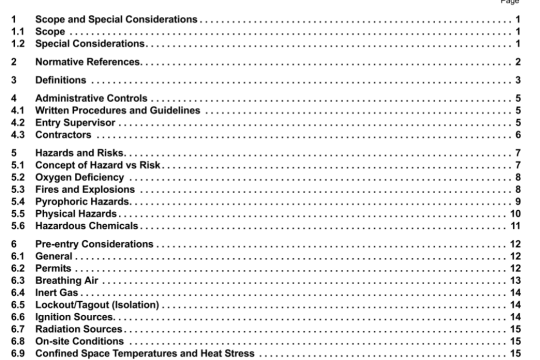API STD 609:2009 pdf download
API STD 609:2009 pdf download.Butterfly Valves: Double-flanged, Lug- and Wafer-type.
4.5.2 The shaft and/or shaft retention shall be designed so that, if failure of the shaft to disc connection or of the shaft occurs, no portion of the shaft can be ejected from the valve as a result of internal pressure. The design shall not rely on actuation components (e.g. gear operators, actuators, levers, etc.) to prevent shaft ejection.
4.5.3 The shaft-to-disc connection shall be designed to prevent loosening due to vibration.
4.5.4 For Category B valves, the shaft shall have a surface finish of 0.80 jim (32 jim.) Ra or smoother in the area in contact with the packing, and the stuffing box shall have a surface finish of 3.2 pm (125 pin.) Ra or smoother. Measurement may be by visual and tactile comparison or by use of a stylus-type surface roughness measuring instrument (refer to ASME B46.1).
4.5.5 Category B valves shall have adjustable shaft packing. The packing mechanism shall allow packing adjustment while the valve is pressurized with line fluid.
4.6 Piping Connection External Bolt Holes
4.6.1 Unless specified otherwise in the purchase order, lugs of lug-type valves shall be provided with tapped holes for studs or bolts.
4.6.2 Threaded body-flange holes for bolts 1 in. or less in diameter shall be drilled and tapped in accordance with ASME B1.1, coarse-thread series, Class 2B. For bolts 1 1/8 in. or more in diameter, such holes shall be drilled and tapped in accordance with ASME Bi .1, eight-thread series, Class 2B.
4.6.3 Threaded bolt holes shall allow full thread engagement to a depth at least equal to the nominal bolt diameter; however, when the bolt hole is adjacent to the shaft, engagement to a depth of 67 % of the nominal bolt diameter is acceptable.
4.6.4 Typical bolting options for lug- and wafer-type valves are shown in Figure 1.
4.7 Seat Retainer—Category B Valves Only
4.7.1 Seat retainer plates (designed per Figure 2) are separate plates intended to retain and compress the valve seat and shall be mechanically fastened to the valve body. Retaining fasteners shall be recessed to or below the flange gasket surface.
4.7.2 Gasket Seating Surface Interruptions—Interruptions in the seating area of a centered ASME B16.20 spiral- wound gasket for valve sizes NPS 6 through NPS 48 shall not exceed the limitations given in Figure 2. The permissible surface interruptions on smaller size valves shall be as agreed between purchaser and manufacturer but shall not exceed 50 % of the gasket seating width.
NOTE The degree of interruption may affect the sealability of a spiral-wound gasket.
4.7.3 All components of lug-type and double-flanged valves designated as suitable for bidirectional dead-end service shall be designed for the valve’s differential pressure rating.
4.7.4 Fully rated valves designated as suitable for bidirectional dead-end service shall be designed such that the seat retainer plate, fasteners, seat and seal shall be capable of withstanding 110 % of the maximum ASME rated differential pressure rating at 38 °C (100 °F), with no leakage (as defined by applicable pressure test criteria— API 598) or permanent deformation of any component, when tested with no downstream flange attached to the valve. (Lug-type valves with no interruptions of the gasket seating surface may be suitable for dead end service only when installed with the seat retainer plate on the pressure side.)
NOTE Dead-end service is the condition that may occur after the companion flange and piping are removed from one side of a lug type valve with threaded lug-bolt holes or from a double-flanged valve. Whenever this is done with equipment in operation, suitable precautions are recommended.
For unidirectional valves, the marking shall be maximum unidirectional dead-end pressure .vtv, where .nr represents 90 % of the lowest pressure in the appropriate direction determined from the prototypical tests. Additionally, the manufacturer will include this information in catalogs and installation, maintenance, and operating documents.
4.8 Operating Mechanisms
4.8.1 Levers, gear operators, handwheel, and automatic actuators shall be equipped with provisions to prevent movement of the disc from the desired set position during normal operating conditions. Normal operating conditions include throttling service when specified by the purchaser.
4.8.2 In addition to the requirements of the valve design, torque requirements for operation vary considerably with changes in flow media, operating pressure, and fluid velocity. Actuators shall be compatible with the operating torque requirements. It is recommended that conditions under which valves are to be operated are specified by the purchaser and are carefully evaluated by the manufacturer to determine the maximum resultant torque.




